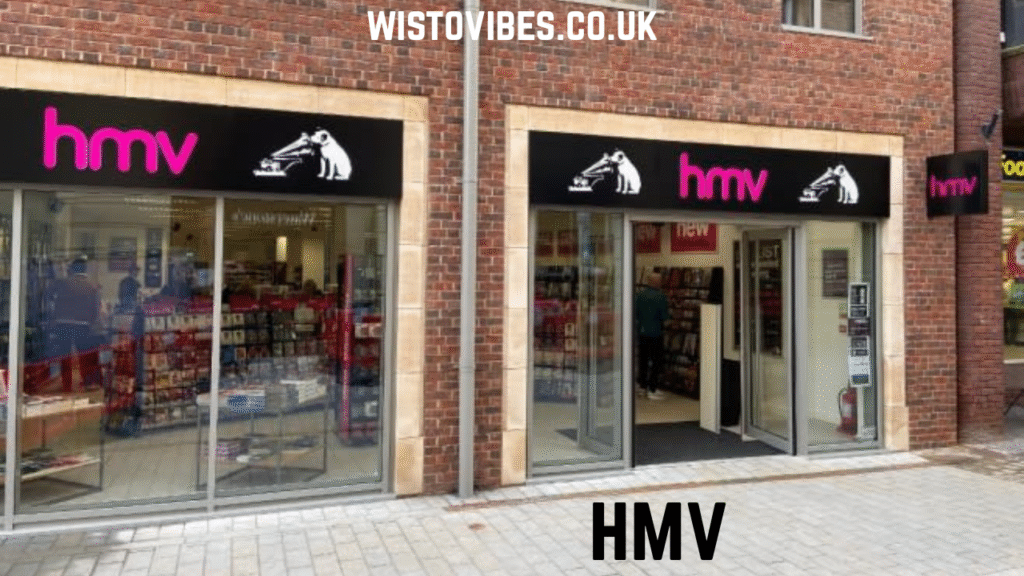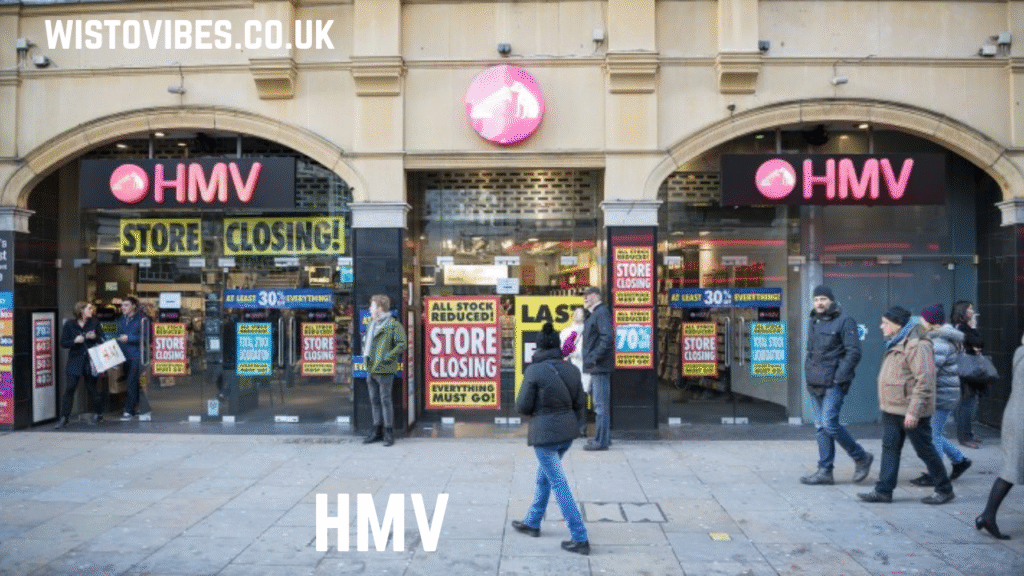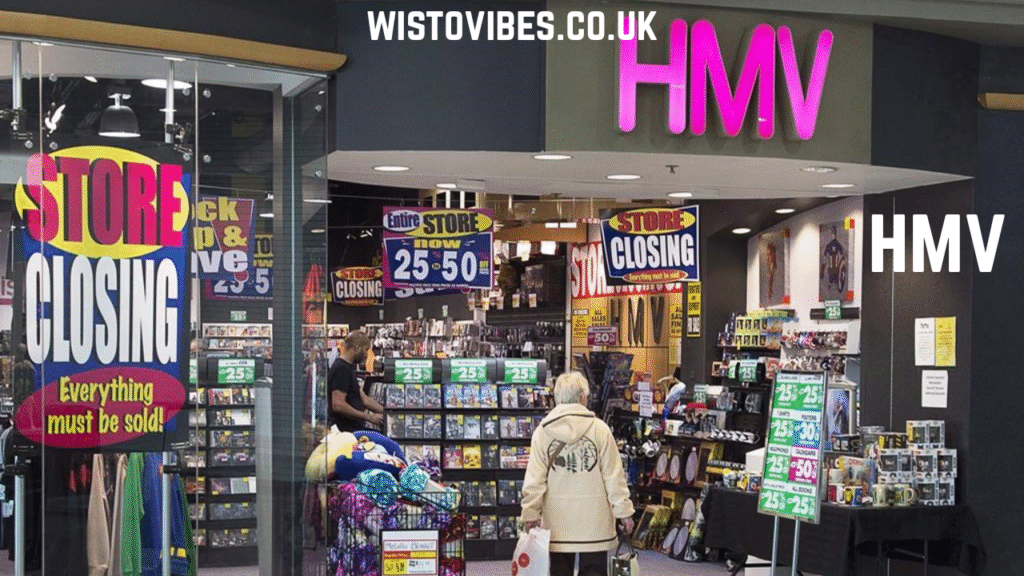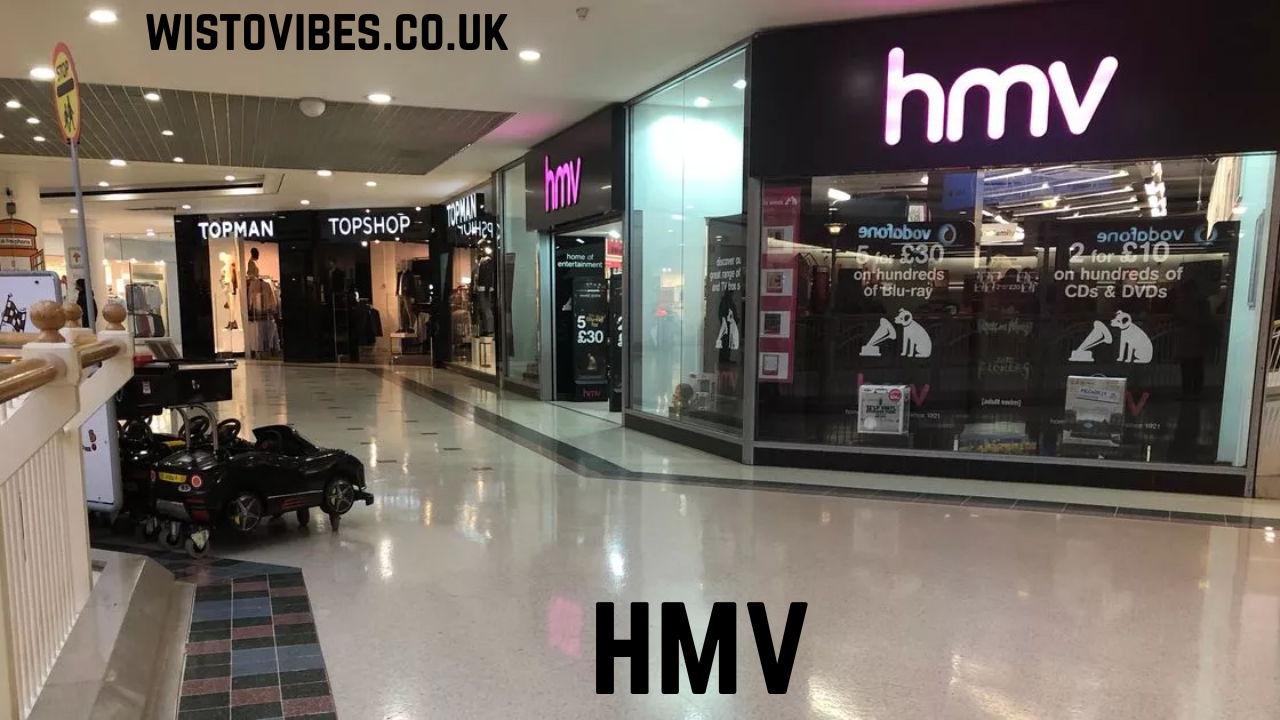hmv, short for His Master’s Voice, is one of the most iconic names in the history of music retail and entertainment. Established in the early 20th century, hmv quickly became synonymous with music lovers, record collectors, and anyone passionate about the growing industry of recorded sound. The name itself originates from a painting by Francis Barraud, which depicted a dog named Nipper listening attentively to a phonograph, symbolizing loyalty to sound and music. Over time, hmv grew beyond a simple brand identity and became a cultural symbol for generations who relied on records, cassettes, CDs, and eventually digital formats to access their favorite music.
The Symbolism of His Master’s Voice

The famous logo of hmv featuring the dog and gramophone became an instantly recognizable image across the world. This emblem carried deep symbolic value because it represented trust, purity of sound, and the emotional connection between listeners and music. The image was not just a commercial tool but a representation of the intimate bond that people form with recorded sound. As hmv stores expanded globally, the logo itself became a part of pop culture, appearing on record sleeves, advertisements, and shop signs, embedding itself into the collective memory of music history.
hmv and the Rise of Recorded Music
During the first half of the 20th century, hmv played an integral role in the growth of the recorded music industry. As vinyl records became more accessible, hmv outlets provided a physical space where music lovers could browse, purchase, and discuss music. The stores became gathering points for communities and acted as cultural hubs where trends were formed. For many, walking into an hmv shop was not just about buying a record but about experiencing the energy of an evolving music industry that was shaping global culture.
Expansion and Popularity of hmv Stores
By the 1960s and 1970s, hmv had already become a dominant force in music retail, especially in the UK. Its flagship store on Oxford Street in London became legendary, attracting crowds of music fans eager to get their hands on the latest albums. The layout of hmv shops, with endless rows of vinyl records and later CDs, created an immersive environment where browsing became an event in itself. Unlike other retailers, hmv specialized in entertainment, offering everything from music to films, making it a one-stop destination for pop culture enthusiasts.
hmv and the Golden Age of Vinyl

Vinyl records were at the heart of hmv’s early dominance, and the golden age of vinyl was truly the golden age of hmv. From rock legends like The Beatles to soul icons like Marvin Gaye, fans flocked to hmv stores to secure the latest releases. The tactile experience of handling a record, admiring its cover art, and playing it at home was central to the music experience of that time. hmv capitalized on this era by stocking vast catalogs, ensuring that both mainstream hits and niche recordings were available, which made it an essential destination for collectors and casual fans alike.
The Transition from Vinyl to CD in hmv Stores
The 1980s and 1990s marked a major technological shift as compact discs (CDs) replaced vinyl as the primary medium for music. hmv adapted quickly to this change and became one of the largest retailers of CDs worldwide. The introduction of CDs meant improved sound quality, portability, and durability, and hmv capitalized on this demand by expanding its inventory. The stores not only sold music but also began diversifying into films, video games, and other entertainment formats, establishing themselves as cultural hubs where new generations discovered the latest trends.
The Cultural Impact of hmv on Music Fans
For many decades, hmv stores were more than just retail outlets; they were sacred spaces for music lovers. The excitement of browsing new arrivals, the joy of finding rare editions, and the thrill of attending artist signings and live events at hmv shops were part of the cultural fabric of the time. These experiences built loyalty among fans who considered hmv not just a store but part of their personal journey with music. The brand’s influence extended far beyond the transaction of buying records—it was about being part of a shared cultural experience.
Challenges of the Digital Revolution for hmv
The turn of the millennium brought challenges for hmv as digital technology disrupted traditional music consumption. The rise of MP3s, file-sharing services, and later streaming platforms fundamentally changed how audiences accessed music. Consumers no longer needed physical records or CDs when entire libraries could be downloaded or streamed instantly. hmv, like many traditional retailers, faced immense pressure to adapt. The decline of physical media sales threatened the very foundation on which hmv was built, and the brand faced multiple financial crises in the early 21st century.
hmv’s Attempts at Reinvention
Despite the challenges, hmv attempted to reinvent itself to stay relevant. The brand expanded its offerings to include merchandise, headphones, DVDs, and video games, tapping into broader aspects of entertainment culture. hmv also experimented with digital platforms and online sales, though competing with giants like iTunes and Spotify proved difficult. However, the company’s commitment to providing a physical space for music lovers never wavered, and in many cities, hmv remained a beloved landmark for those who valued the tangible experience of buying and owning music.
hmv and Pop Culture Significance

One of the enduring strengths of hmv is its association with pop culture. From in-store appearances by global superstars to exclusive album launches, hmv became known as a venue where fans could engage directly with their favorite artists. These events reinforced hmv’s cultural relevance even as digital platforms gained dominance. Many artists themselves valued the connection that hmv stores provided, as they allowed direct fan interactions and a platform for promoting their work in a personal and engaging way.
The Role of hmv in Supporting Independent Artists
hmv also played an important role in supporting independent and emerging artists. Unlike purely digital platforms that often favor mainstream visibility, hmv gave shelf space to smaller labels and less-commercial music. This inclusivity helped broaden the musical landscape and introduced audiences to a diverse range of genres and performers. Independent musicians often relied on hmv as a gateway to reaching audiences who might otherwise never discover their work, reinforcing the brand’s cultural and artistic significance.
hmv and the Collectors’ Culture
As vinyl made a comeback in the 2010s, hmv saw a resurgence in relevance by appealing to collectors and enthusiasts. The tactile nature of vinyl, combined with the nostalgia associated with it, helped fuel renewed interest in physical media. hmv capitalized on this trend by offering special editions, reissues, and exclusive releases that appealed to collectors. This collector’s culture brought a sense of uniqueness and ownership back to music consumption, distinguishing it from the disposable nature of streaming services.
hmv’s Expansion into Film and Gaming
To remain competitive, hmv broadened its catalog to include films and video games. By doing so, the brand transitioned from being purely a music retailer to a comprehensive entertainment hub. This strategy attracted not just music lovers but also fans of cinema and gaming, ensuring a wider audience base. In-store sections dedicated to DVDs, Blu-rays, and gaming accessories turned hmv into a multifaceted entertainment destination, further solidifying its place in the cultural marketplace.
The Decline of High Street Retail and hmv’s Struggles
The decline of traditional high street retail added to hmv’s struggles. With the convenience of online shopping and the dominance of e-commerce giants, many brick-and-mortar stores faced closures, and hmv was no exception. Several of its iconic outlets were shut down as part of restructuring efforts to save the brand. The closures were not just economic losses but emotional blows for generations of fans who associated hmv stores with their formative music experiences.
The Survival and Resilience of hmv
Despite the challenges, hmv demonstrated resilience and a will to survive. Through ownership changes, restructuring, and renewed business strategies, the brand managed to hold on to its identity. hmv leaned heavily into its nostalgic appeal, focusing on vinyl, merchandise, and events that highlighted the enduring love for physical media. This survival story highlights the deep cultural roots of hmv and its ability to adapt while staying true to its origins.
hmv in the Digital Age
In the digital age, hmv continues to walk a fine line between tradition and innovation. While online platforms dominate music consumption, hmv leverages its physical presence to offer something that digital platforms cannot replicate: the tangible experience of browsing, collecting, and connecting with music physically. For younger audiences discovering vinyl for the first time, hmv provides an entry point into a cultural tradition, while for older generations, it represents a nostalgic return to their musical past.
hmv and the Community Experience
One of hmv’s greatest strengths lies in its ability to create community experiences. Whether through in-store performances, signing events, or simply providing spaces where music enthusiasts can meet, hmv fosters connections among fans. This sense of community cannot be replicated in the solitary world of streaming, making hmv a unique and valuable cultural institution. The human interaction, shared excitement, and personal touch of the hmv experience remain its strongest assets.
The Future Prospects of hmv
Looking ahead, hmv’s future depends on balancing tradition with innovation. By focusing on vinyl, collectibles, and pop culture merchandise, the brand can continue appealing to niche markets while also embracing selective digital strategies. The continued growth of retro culture, where physical media regains popularity, works in hmv’s favor. With careful management and a commitment to preserving its heritage, hmv can remain a relevant and beloved name in entertainment for decades to come.
Conclusion The Enduring Legacy of hmv
The story of hmv is not just the story of a company but of the music industry itself. From the early days of gramophones to the era of streaming, hmv has witnessed every transformation in how people consume music. Despite challenges, its legacy endures because it represents something deeper than retail—it represents the cultural and emotional power of music. hmv remains a symbol of loyalty, passion, and community, reminding us that even in a digital world, the love for tangible, shared musical experiences will never disappear.
FAQs on hmv
What does hmv stand for?
hmv stands for His Master’s Voice, originally derived from the famous painting of a dog listening to a gramophone.
Why is hmv important in music history?
hmv played a central role in making recorded music accessible to the masses and became a cultural hub for music lovers for over a century.
What challenges did hmv face in the digital era?
hmv struggled with the decline of physical media sales, competition from digital platforms, and the collapse of traditional retail markets.
Does hmv still exist today?
Yes, hmv still exists, though with fewer stores, and it has shifted focus to vinyl, collectibles, and pop culture merchandise.
What makes hmv unique compared to online platforms?
hmv provides a tangible, community-driven experience with physical products, exclusive releases, and events that digital services cannot replicate.
Read More: Love Holidays A Journey of Romance Togetherness and Cherished Memories




